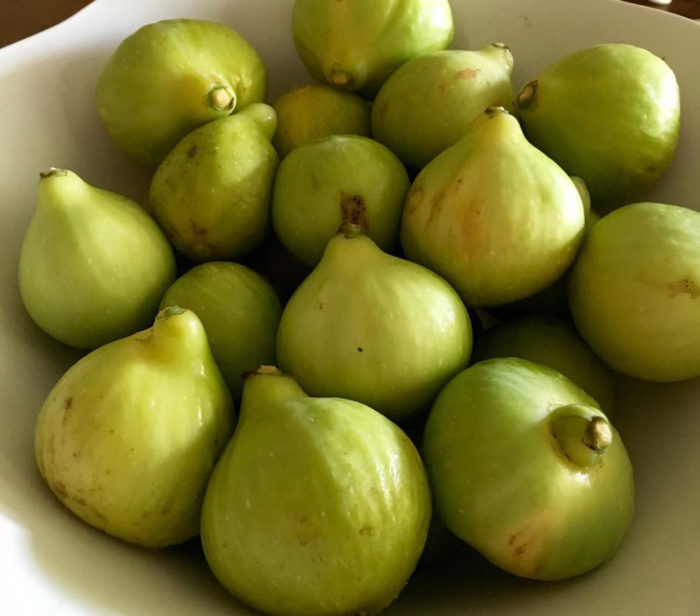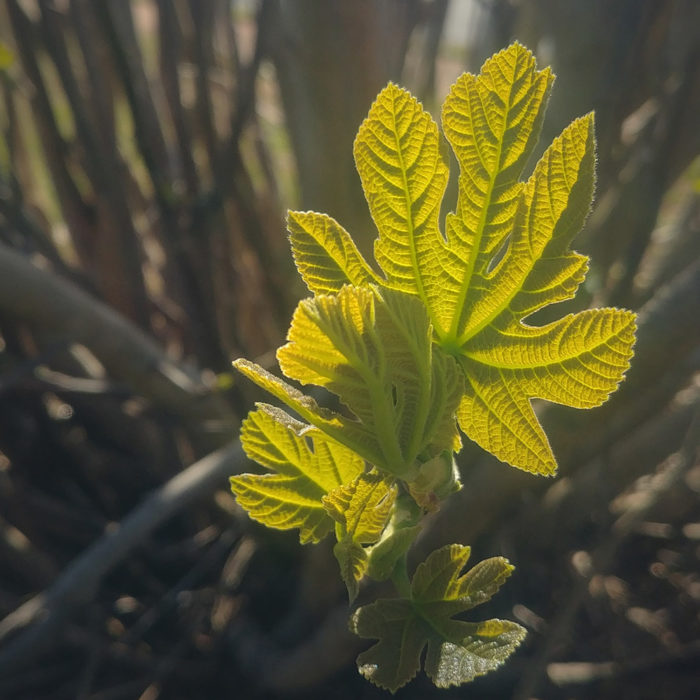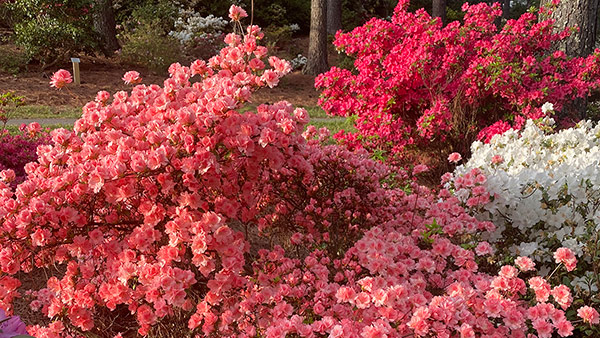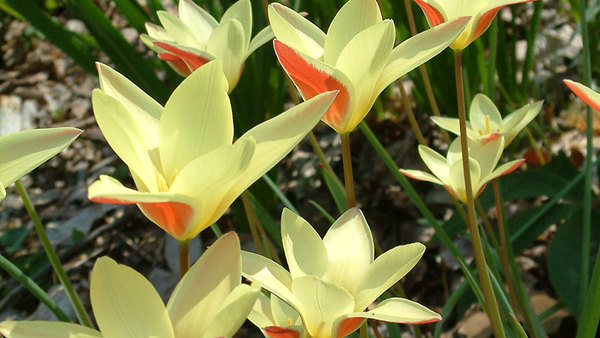
We live in the perfect climate for growing an ancient agricultural crop pictured on pyramids and mentioned in Greek texts, the Bible, and the Quran. So if you’re not already, ask yourself, “Why am I not growing figs?”
I asked myself this question after years of admiring proud old farmhouse specimens. Somehow I had adopted the belief that they weren’t quite hardy and that I didn’t have the space for such rural abundance. Luckily, an urban gardener with not one but two espaliered cultivars dispelled those myths, and now I wouldn’t want to be without the big bold leaves and sweet summer fruit of my ‘Brown Turkey’ fig (Ficus carica ‘Brown Turkey’, Zones 6–9).
Growing and caring for figs
Figs (Ficus carica cvs., Zones 6-9) are one of the easiest fruits to grow in Zones 7–9, so it’s not surprising that they’ve been a part of Southern home gardens for hundreds of years, having been introduced into what is now Florida in the late 1500s by Spanish explorers. Fig trees—or shrubs, as they are more often grown in the mid-South—are rarely troubled by pests, grow in both sandy and clay soils, tolerate moderate drought, and bear fruit in two to three years from transplant. Fertilizer is needed only on soils with particularly low fertility, and supplemental water is needed only on sandy soils or in drought conditions.
While figs can reach 15 feet tall and wide in the Lower South, don’t write them off based on these dimensions. In Zones 6–7 they often freeze to the ground and sprout again from roots, effectively controlling their size. In Zones 8–9 they can be heavily pruned, espaliered, or grown in 10- to 15-gallon containers. They are very tolerant of frequent and hard pruning, and most varieties fruit off of both old and new growth, with a light summer harvest from the former and a heavy early fall harvest from the latter.
Maintenance pruning of an open-grown shrub is minimal. Thin any crowded branches, and remove smaller suckers in February. When pruning, you’ll soon discover the milky sap that is a characteristic of all plants in this family. Wear gloves or immediately wash up if it drips on your skin, as the sap is irritating to varying degrees.

If you’re getting excited, go for it! If you’re reading this in early May, it’s not too late to plant a fig this season. In fact, in the upper Southeast, it’s best to plant in spring (March–May). If you’re in the Lower South, fall planting is just fine too. Choose a location with at least six hours of sun and good drainage. Water well the first growing season, and top with organic mulch.
Troubleshooting figs
Sounds like paradise, right? Well, even paradise has its occasional troubles, so take note of a few potential issues.
Is your fig growing in sandy soil? Root-knot nematodes can infect your plant. If you notice reduced or unhealthy growth, consult your extension service for tips on diagnosing this condition.
Do you have leaves with brown patches on top and yellow or orange structures underneath, and do those leaves eventually drop? Fig leaf rust is not common, but it can occur. New leaves will grow back, but be sure to remove all diseased leaves from the area.
Is fruit dropping off before ripening? Be sure you are not trying to grow Californian or Smyrna-type figs (unlikely). These require a pollinator, while “eastern” figs are female and self-fruiting. ‘Alma’, ‘Celeste’, ‘Brown Turkey’, ‘White Marseilles’, ‘LSU Purple’, ‘and ‘Green Ischia’ are all good choices. Dropping fruit on these is usually due to especially dry conditions and is solved with supplemental watering.
The reward of growing a bit of agricultural history? Fresh figs! They can go from unripe to overripe fairly quickly, so pick just as they are turning color. Fresh figs do not last long. Seize the day and share them with neighbors, or follow the long-standing tradition of making simple fig preserves. The golden sweetness of homemade fig jam in winter is just one more special delight of gardening in the Southeast.
—Paula Gross is the former assistant director of the University of North Carolina at Charlotte Botanical Gardens.


















Comments
Log in or create an account to post a comment.
Sign up Log in